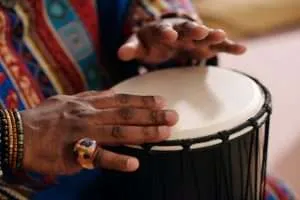The caste system is one of the ancient forms of social stratification and even though it has been abolished through judicial legislations, the political divisions continue to exist in the minds of the people, leaving many oppressed.
What is caste?
The word “caste” derives from the Portuguese word “casta,” meaning breed, race, or kind. In a caste system, the citizens are divided into categories or castes. Varna, the Sanskrit word for colour, refers to large divisions that include various castes; the other terms include castes and subdivisions of castes sometimes called subcastes.
The caste system in India is primarily associated with Hinduism but also exists among other Indian religious groups across the east asian continent. Castes are strictly ranked and named. Membership to a particular caste or varna is allotted through birth and movement up the caste/varna structure is strictly prohibited. Castes are also endogamous groups. Marriages and relationships between members of different castes, while not actually prohibited, face strong social disapproval and the threat of ostracism or even violence.
Caste in a Comparative Perspective
Caste as a structural construct is considered as a category or type within a general theory of social stratification, comparable in many respects to hierarchical segregation seen in the Indian subcontinent. In this regard, Berreman argued that “to define caste in terms of its uniquely Indian attributes eliminates or at least diminishes its use as a cross-culturally comparable phenomenon.” He preferred to define caste more broadly in order to include, for the purpose of comparison, similar systems of social stratification that occur in other cultures.
Berreman argued that a caste system resembles a plural society whose discrete sections are all ranked vertically. Indian caste, therefore, is analogous to social structures elsewhere in which rank is ascribed, such as, for instance, racial differentiation in the United States.
Comparative Sociology and Caste
Comparative sociologists have generally placed caste systems not as a unique religious, ideological or structural category but as a model of ethnic differentiation and social stratification. Among the anthropologists studying caste hierarchies in India, there exist theoretical debates among scholars who regard it as an extreme form of social stratification, comparable with other forms of inequality based on social classes, wealth or political power and those who regard it as an efficient system of socio-economic specialization prevalent in feudal India.
The traditionally accepted former approach emphasises that the caste system is held upright by a rigid patriarchal system coupled with power concentrated in certain elitist stratas of the society (the landholding and dominant caste), more than on a general consensus among the population.
The Alleged Brahmo Centric View of Caste in India
It has been argued that Brahmin (the highest rank holder in the caste hierarchy) in the caste system does not fall under the jurisdiction of the Kshatriya (economic–political power/Ruling Elites). The relationship between the spiritual dictums and the idea of authority is fully seen in the institution of the “purohit” (priest) with whom the king must have a sustained personal and cordial relationship. However, if one goes by historical and ethnographic evidence, there is scant support for the precedence of priest over prince.
The prince was not dependent on the priest for all actions. In economic, political, juridical, and martial matters, which were the main spheres of kingly duty (rajdharma), there was little involvement of the priest. The prince was the eminent owner of all land in the state, on which depended the survival of all including that of the titular head, the priest. To collapse the court into the temple and privilege the temple over the court and the priest over the prince is a distortion of historical reality.
The Gendered System of Social Stratification in India
Similar to the caste system and class system, another stratification of Indian society in particular, is based on the gender based connotation of a person. In a feudal patriarchal setup, gender has been the prevalent source of social stratification. Even in modern Indian society, gender based discrimination and violence is prominent. Gender stratification happens amongst various groups, communities, and regions.
Gender is not limited to the sex of a person; it is more of a socially constructed category rather than being determined biologically. Clinically, there exists numerous gender and sexual identities now, such as gay, bisexual, transgender, queer and more. Indian society segregates blatantly between “other” genders and sexualities and the cisgender and straight categories. The LGBTQ community is at the receiving end of this stratification from time to time.
In short, the stratification of Indian society with reference to caste, class, and gender is very damaging to the inclusive development of a society. Furthermore, we need to erase all mental differences between the members of society for a happier, healthier and resilient society. Indian society needs to broaden their metaphysical understanding of humanity and become more accepting of human beings as a whole, irrespective of caste, class, gender and sexuality.
Max Weber’s View in the Hindu Caste System:
When Max Weber put forward his study of religion and society in India, as a part of his famous treatise on the “Sociology Of Religion,” all the major Sanskrit scriptures of Hinduism had been made available in high quality translations, through the efforts of orientalists. Weber was well acquainted with these sources, and he was also familiar with the census reports, which he described as “scientifically excellent.”
Weber considered the Indian society an “ideal type”of his general notion of belief systems as main determinants of the social and economic structure (in contrast to the Marxist view). In India, the relationship between religious beliefs and social differentiation was direct and explicit, whereas in western society the connection is indirect and obscure.
Hence, caste appeared, to Weber, as an integral aspect of Hinduism, and he started out by declaring this central notion quite axiomatically: “before any things else, without caste there is no Hindu.” Weber then went on to explore the alleged parallel between caste and guild. He concluded that there was much more to caste than mere occupational specialization.
For instance, the guilds of the European Middle Ages were not closed, endogamous social units like castes. Therefore, an extensive analogy between caste and guild missed the essential features of both phenomena. This served to corroborate the major point Weber wanted to prove. The formative forces underlying caste are not to be found in economic or material conditions, but in ideology, i.e. religion, in the shape of Hinduism.
Caste and Division of Labor
In its inception, caste was a system for the division of labour, and social relations between different caste groups were regulated by the “jajmani” system (a feudalistic system of prescribed, hereditary obligations, of payment and of occupational and ceremonial duties, between two or more specific families of different castes in the same locality).
With the decline of the jajmani system and increase in diversification, caste identity became an instrument to mobilize people for both economic and political gains. As many have noted, a basic shift took place in caste. The shift went from ritual hierarchy to identity politics, from ascribed and designated status to negotiated positions of power, from ritual definitions of roles and positions to civic and political definitions of the same. While the caste system may have eroded at the ritual level, it emerged and continues to persist at the political and economic levels.
References:
- https://asiasociety.org › Social Stratification in India | Asia Society
- https://papers.ssrn.com › Caste System and Social Stratification in India – SSRN Papers
- https://www.lkouniv.ac.in › PDF In Max Weber’s phraseology, caste and class are both status groups. While …
- https://www.cambridge.org › Closed Social Stratification in India | European Journal of Sociology …








